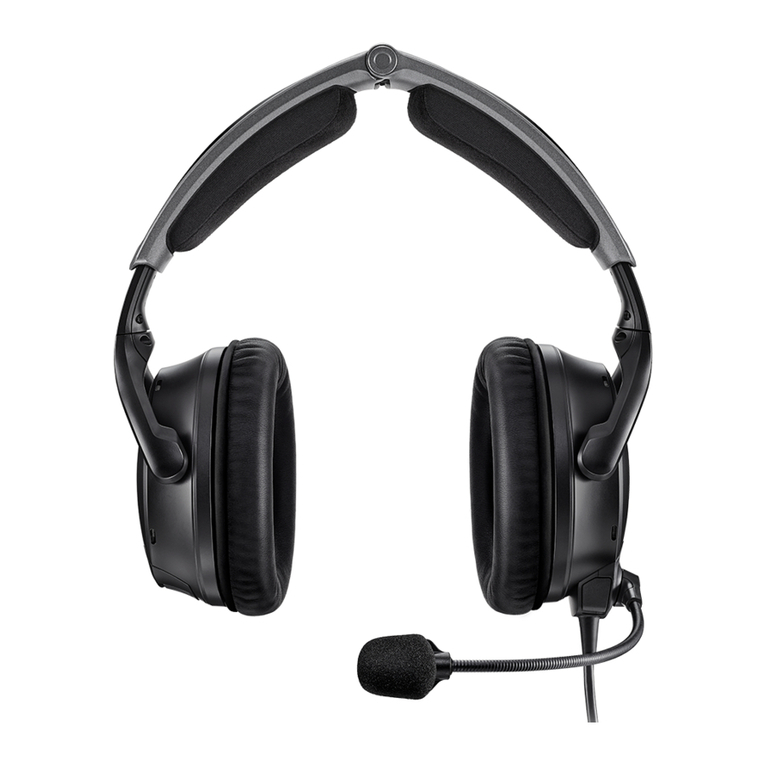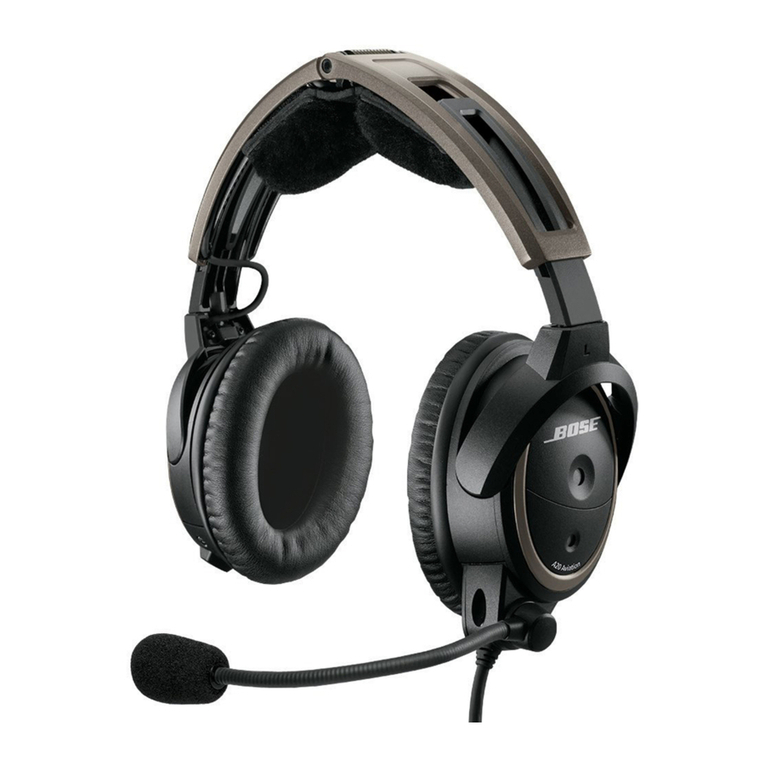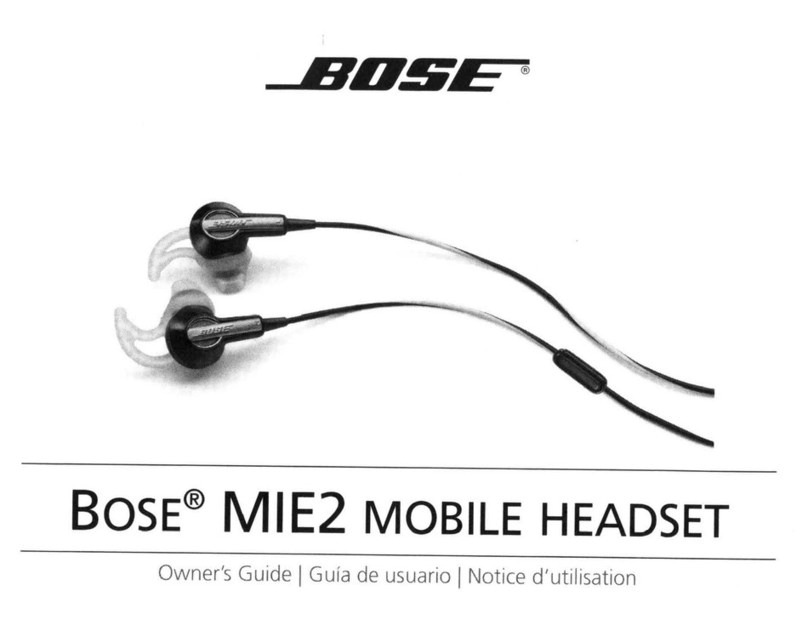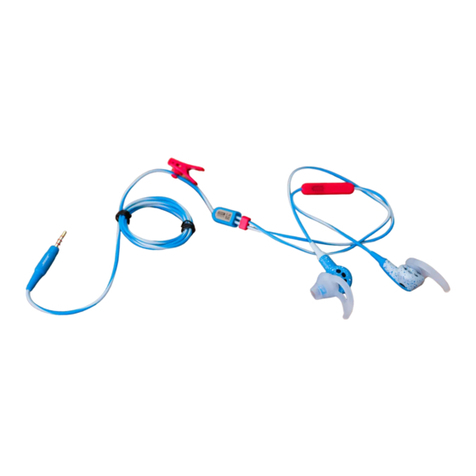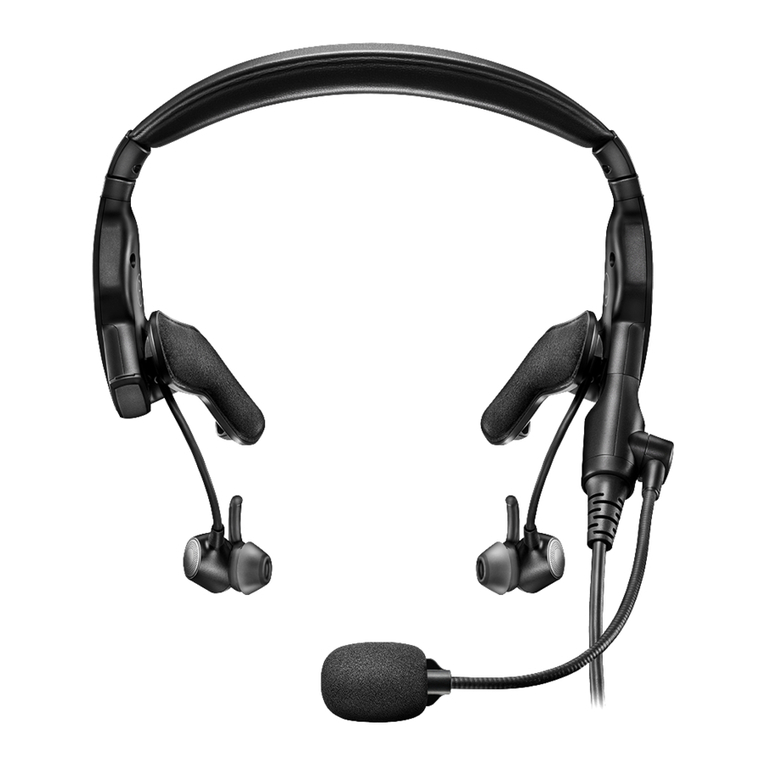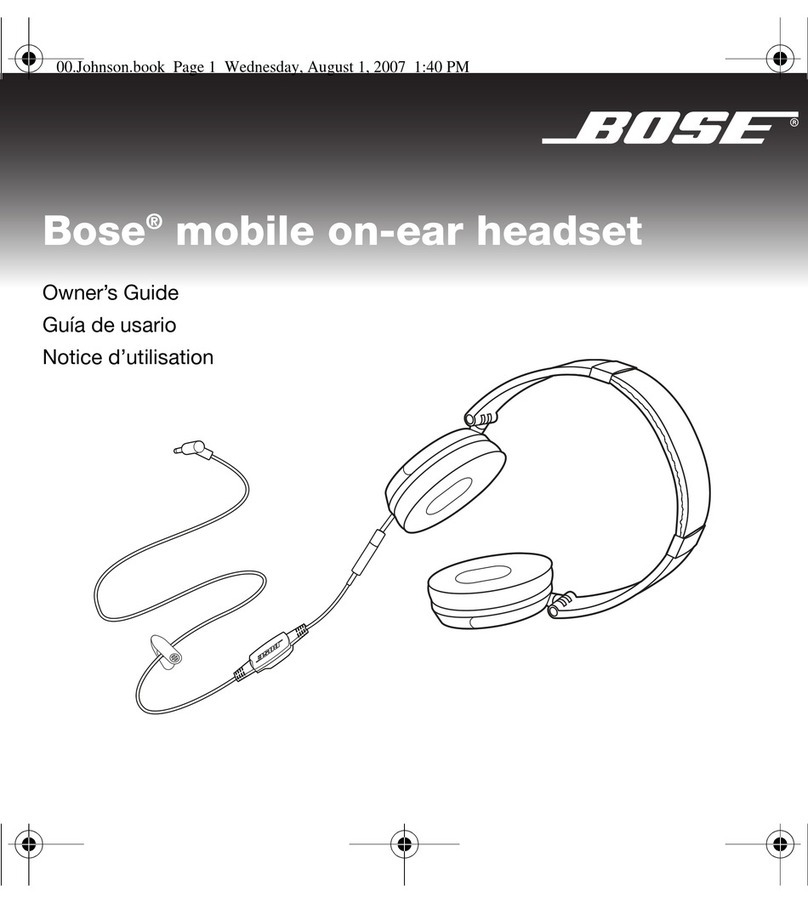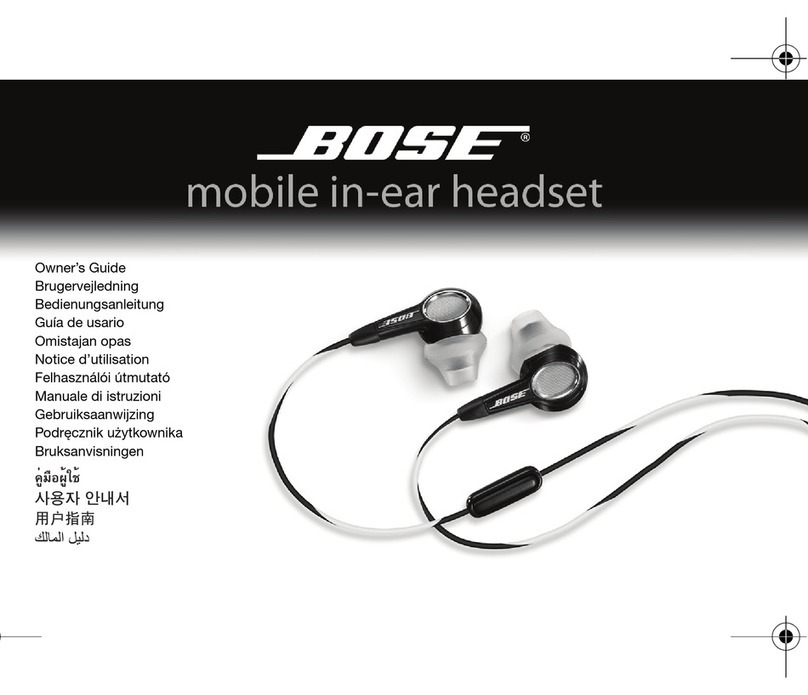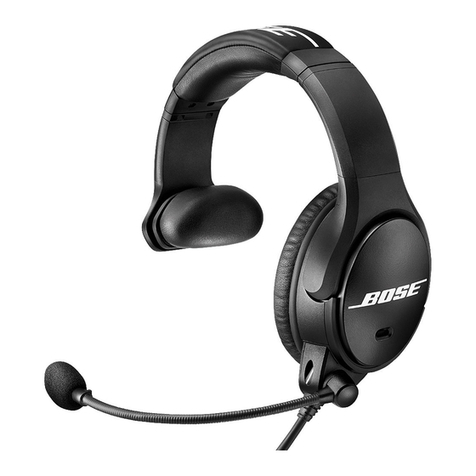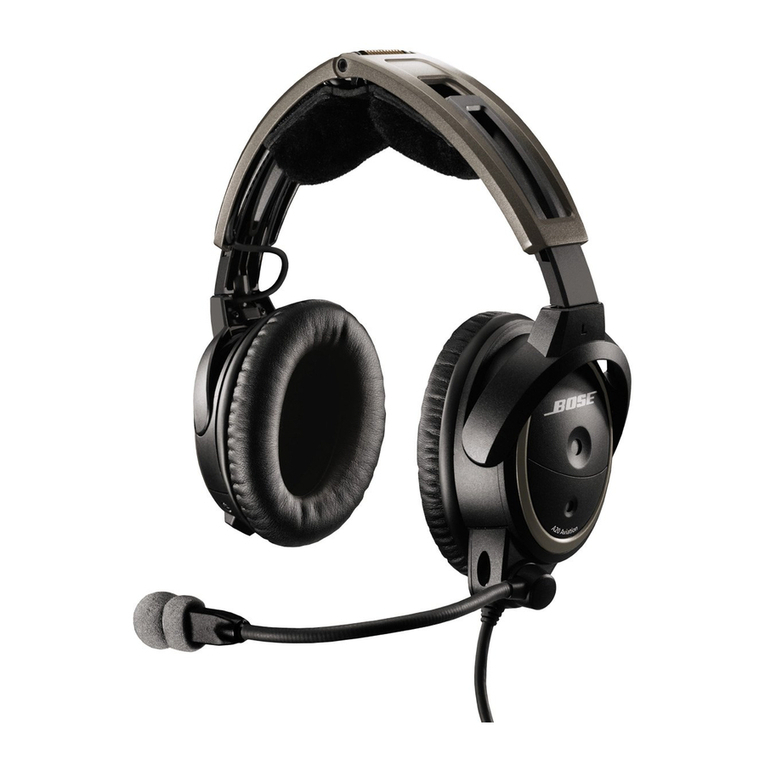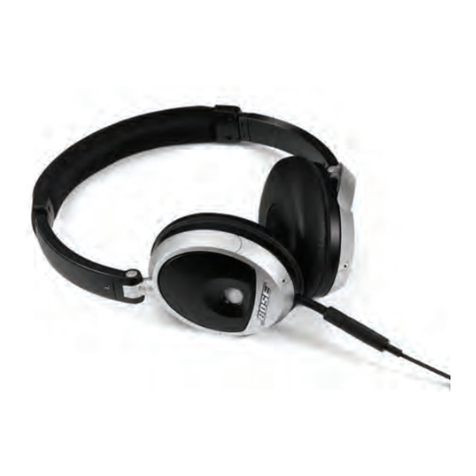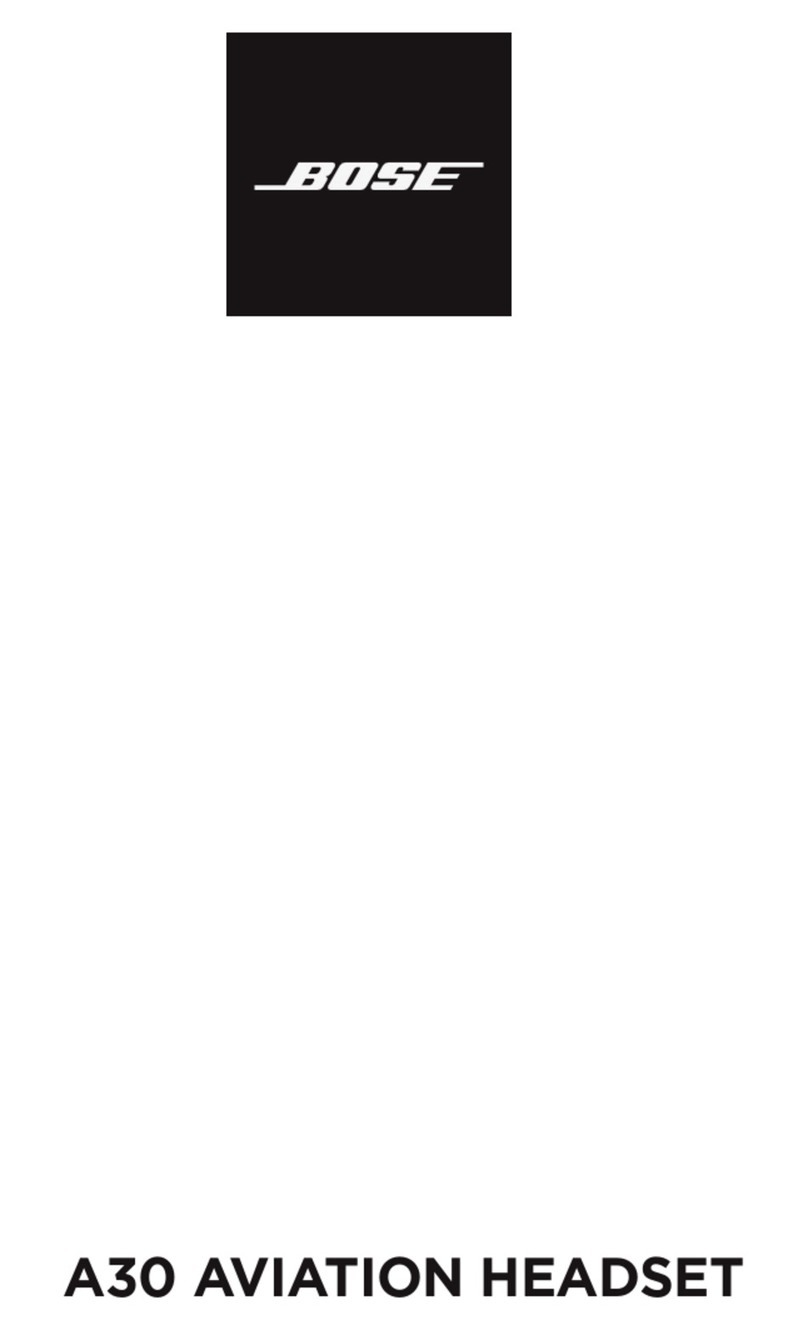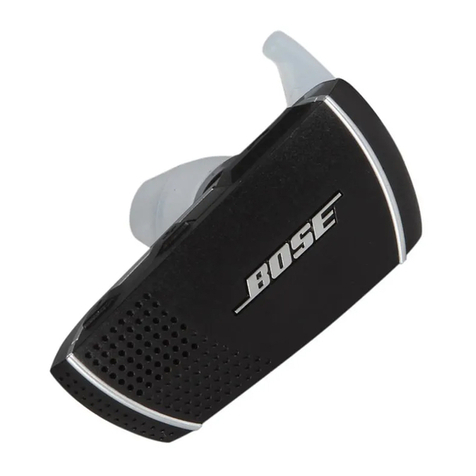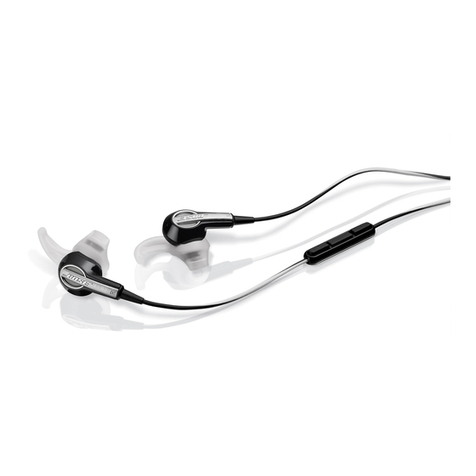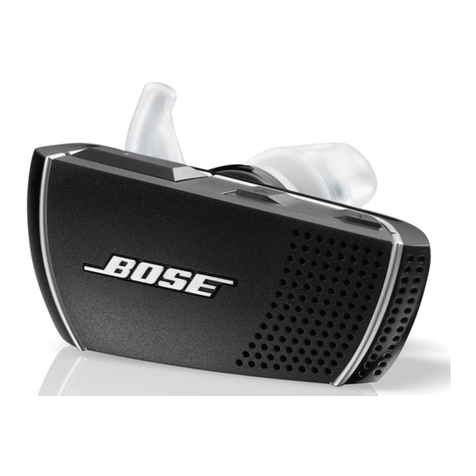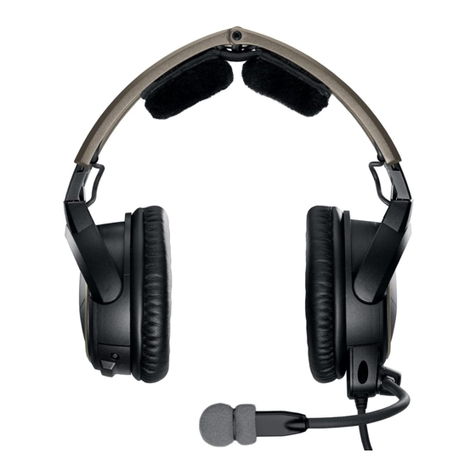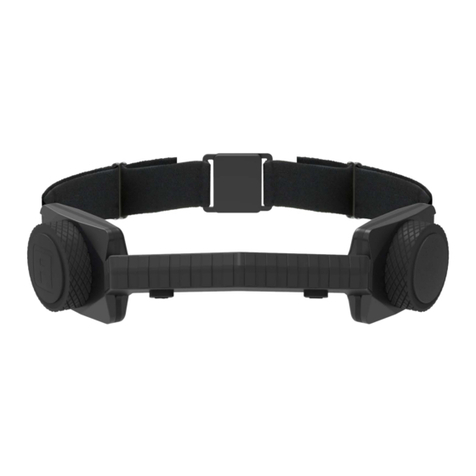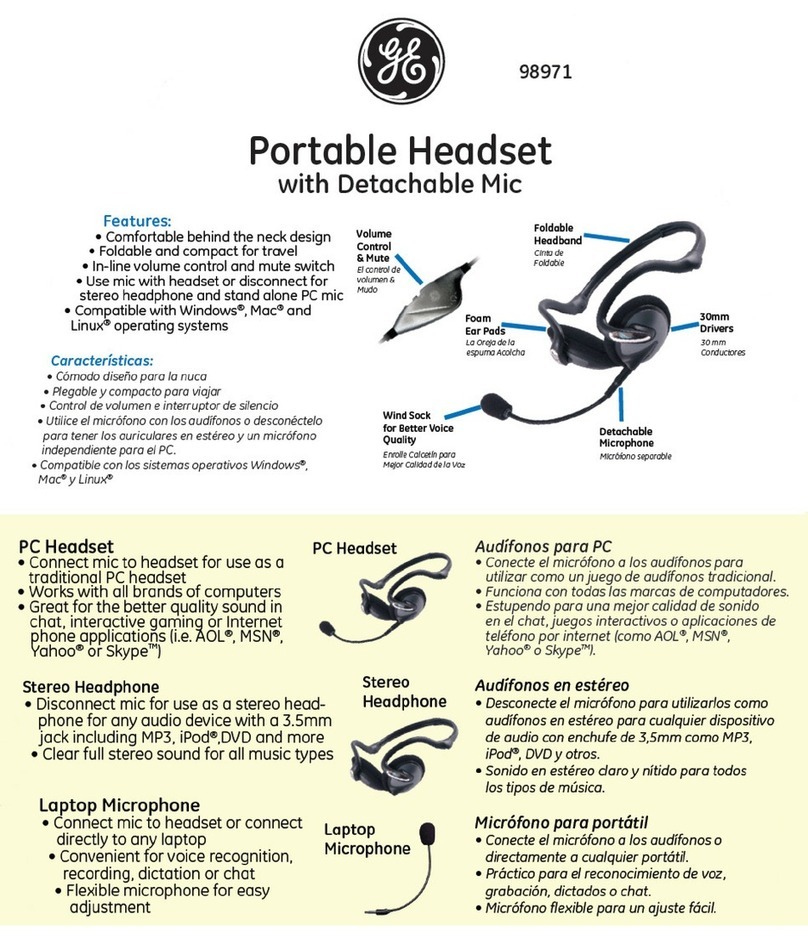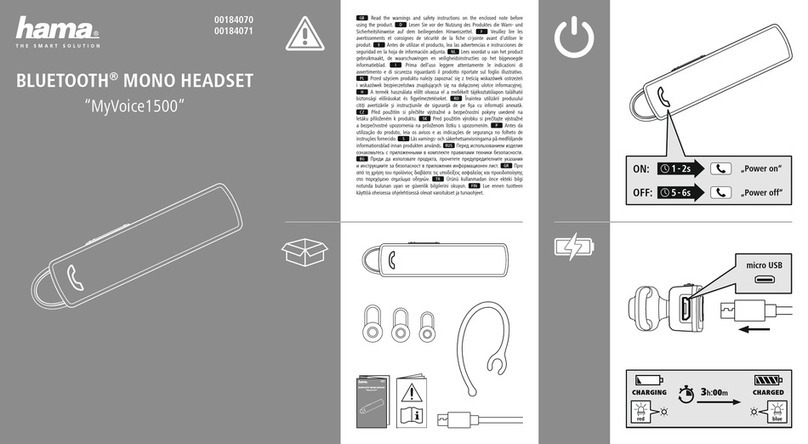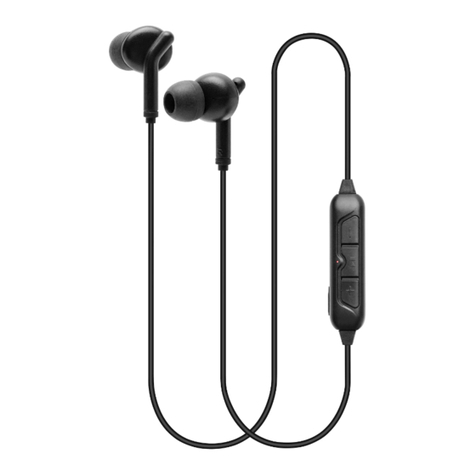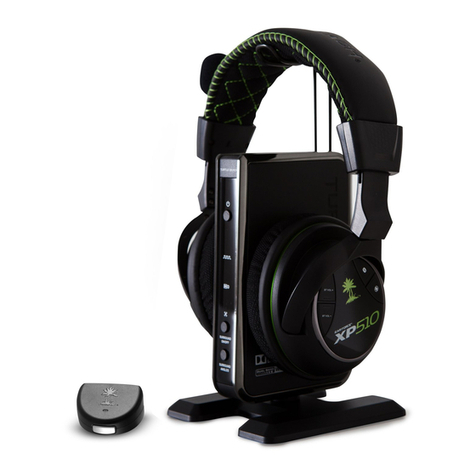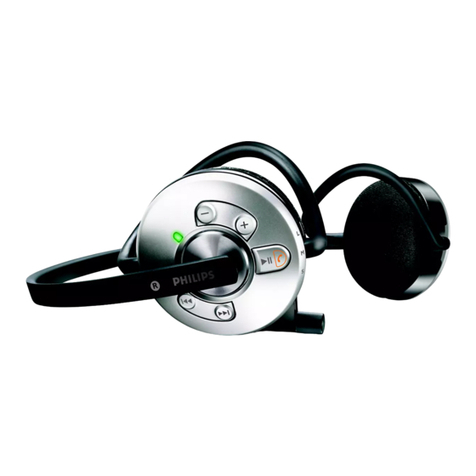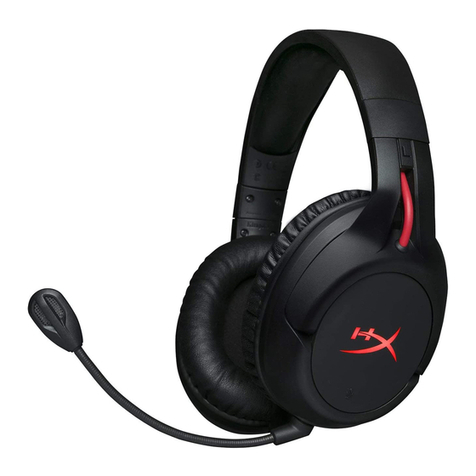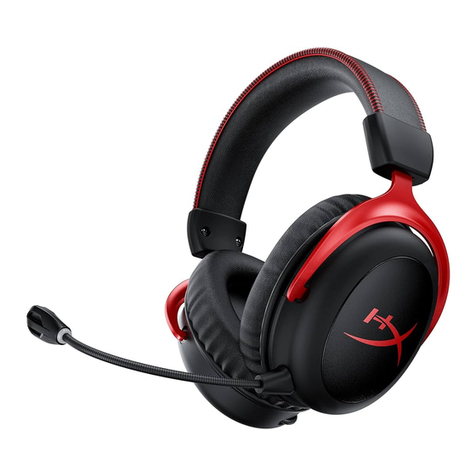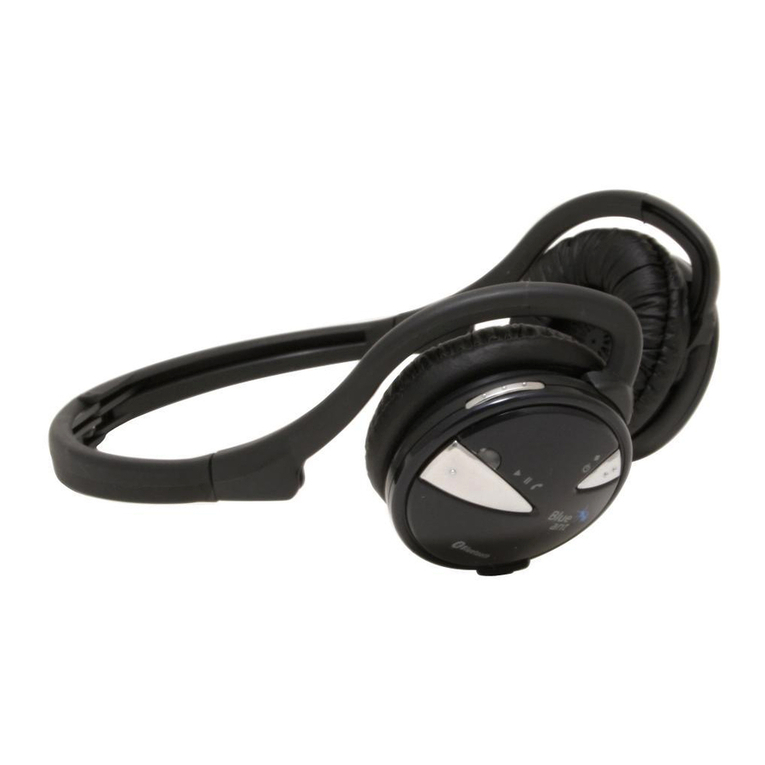Please read and keep all safety and use instructions.
ATTENTION: This is a professional headset. Commercial use is subject to the rules and regulations of the trade
association responsible. This system is capable of producing sound pressure exceeding 85 dB(A).
To prevent hearing damage, avoid high volumes and long durations of headset use at higher volumes.
The following may be signs that you have been subjected to excessive noise for too long a time: You can hear ringing or
whistling noise in your ears; or you have the impression that you can no longer hear high frequencies.
WARNINGS/CAUTIONS
• DON’T use the headset at a high volume for any extended period.
- To avoid hearing damage, use your headset at a comfortable, moderate volume level.
- Turn the volume down on your device before placing the headset on your ears, then turn the volume up gradually
until you reach a comfortable listening level.
• DON’T use the headset if it emits a loud squeal or other loud noise. Contact Bose technical support if the headset
emits any loud or unusual noise.
• DO focus on your safety and that of others if you use the headset while engaging in any activity requiring your
attention. Remove the headset or adjust your volume to ensure you can hear surrounding sounds, including alarms
and warning signals.
• DON’T use the headset as an aviation communication headset.
• DO remove the headset and disconnect immediately if you experience a warming sensation or loss of audio.
• DO use only attachments/accessories specified by the manufacturer.
• DO use only AA alkaline batteries. Replace the batteries only with AA alkaline batteries. There is a danger of explosion
if batteries are incorrectly replaced with any other battery chemistries. Batteries may cause a fire or chemical burn if
mishandled. Do not recharge, disassemble, heat, or incinerate batteries. Dispose of used batteries properly, following
any local regulations.
• DON’T short-circuit the battery. DON’T store batteries carelessly in a box or drawer where they may short-circuit
each other or be short-circuited by other metal objects. DO remove the battery from the equipment when not in use.
In the event of a battery leaking, DON’T allow the liquid to come in contact with the skin or eyes. If contact has been
made, wash the aected area with copious amounts of water and seek medical advice. DON’T mix cells of dierent
manufacture, capacity, size or type within a device.
• DON’T repair the headset yourself. Do not attempt to remove, replace, or repair the protective inner screen on the
inside of the earcup, which is critical to the headset’s performance. If screen replacement or other repair seems
necessary, contact Bose technical support. See “Contact information” on page 20. If the screen gets wet or any
foreign objects become lodged on or adjacent to it, follow the instructions in “Cleaning the headset” on page 15.
• DON’T place naked flame sources, such as lighted candles, on or near the product .
• DON’T make unauthorized alterations to the product; doing so may compromise safety, regulatory compliance, system
performance, and may void the warranty.
Contains small parts which may be a choking hazard. Not suitable for children under age 3.
This product contains magnetic material. Consult your physician on whether this might aect your implantable
medical device.
